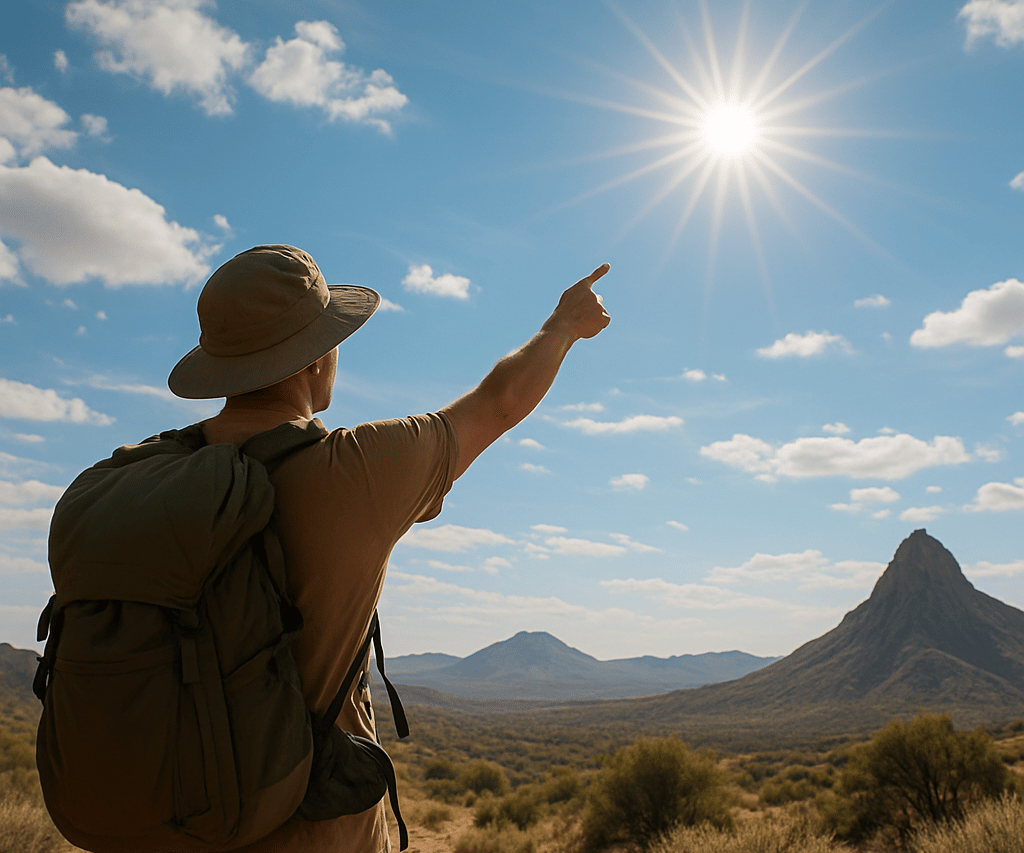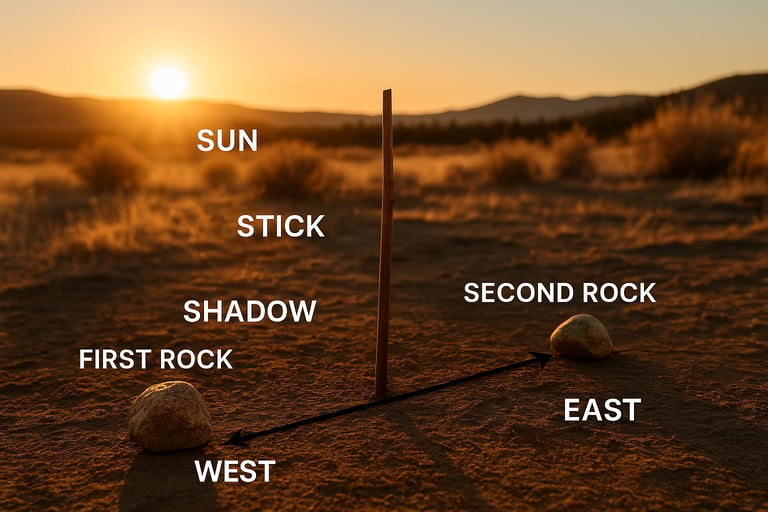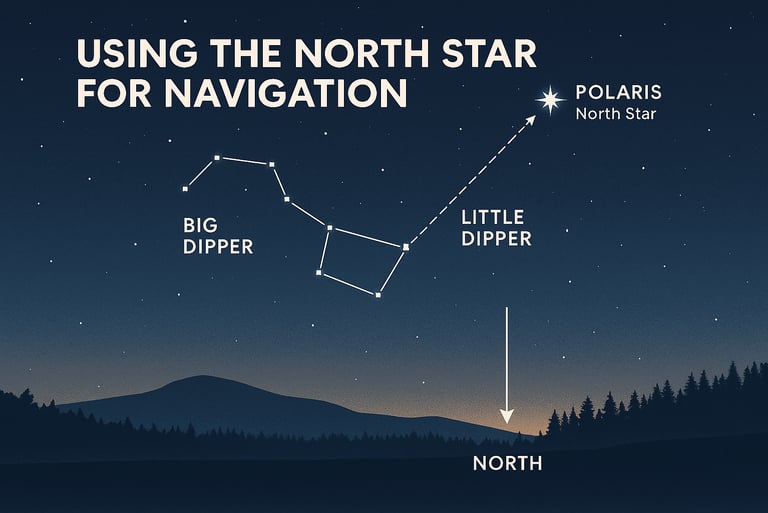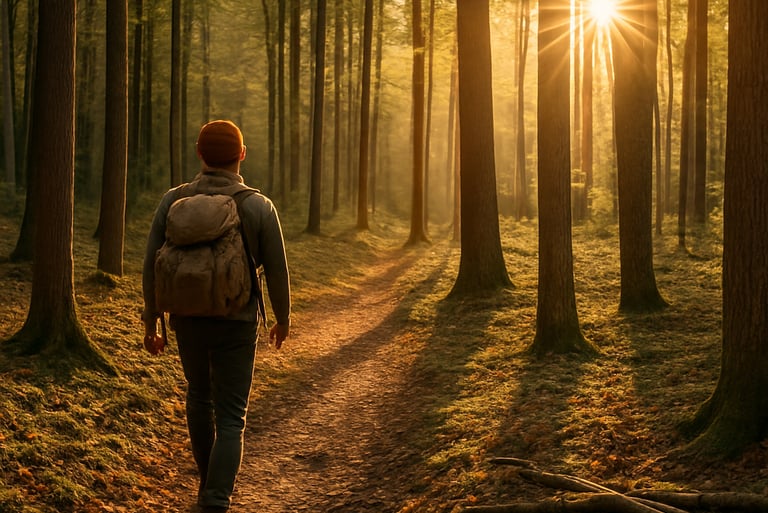Navigating Without a Compass: Using the Sun, Stars & Natural Landmarks in the Wilderness
Learn how to navigate without a compass using nature’s cues. Discover how to find direction in the wilderness by reading the sun’s position, identifying constellations, and recognizing key natural landmarks for survival navigation.


Navigating Without a Compass: Using the Sun, Stars & Natural Landmarks in the Wilderness
Introduction to Natural Navigation
If you ever find yourself off the trail or without a compass in the wilderness, knowing how to navigate using natural signs can make all the difference. Humans have relied on the sun, stars, and the natural features of the land to find their way for centuries. These methods might seem old school, but they’re still effective and often surprisingly accurate when used correctly.
This guide will walk you through simple techniques for wilderness navigation using nothing but what’s around you.
Using the Sun to Find Direction
The sun is one of the most reliable tools in natural navigation. In the Northern Hemisphere, it generally rises in the east and sets in the west. Around midday, it’s typically found in the southern part of the sky. One simple technique is to use a stick and its shadow.
Place a stick upright in the ground and mark the tip of the shadow. Wait 15–30 minutes and mark the new shadow tip. Draw a line between the two points. This line will run approximately west to east, with the first mark being west.
This method works best on clear days when the sun casts a defined shadow. It's also helpful to pay attention to how the sun travels across the sky over the course of the day, especially in open areas. If you’re pairing this with map work, it helps to understand how to read a topographic map so you can better match natural features with your surroundings.
Reading the Stars for Night Navigation
When daylight fades, the night sky becomes your map. The most useful star for navigation in the Northern Hemisphere is Polaris, also known as the North Star. It remains relatively fixed in the sky and points due north. To find Polaris, locate the Big Dipper constellation, then follow the two stars at the end of the “bowl” to the tip of the Little Dipper’s handle—Polaris.
The orientation of the stars changes as the night progresses, but Polaris remains constant. Familiarizing yourself with other constellations like Orion or Cassiopeia can also help you track the general direction when Polaris isn’t visible due to cloud cover or obstructions. Knowing how to use a compass without a map can further strengthen your night navigation by giving you backup techniques for orientation.
Navigating by Natural Landmarks
The landscape itself holds valuable clues. In many regions, moss tends to grow more heavily on the north-facing side of trees, though this isn’t a universal rule. The slope of the terrain can also offer guidance — water often flows downhill toward valleys or rivers, which can eventually lead to roads or settlements.
You can also look for sun-bleached bark or denser vegetation that faces the sun more often (typically south in the Northern Hemisphere). Repeating patterns in the landscape, such as wind-worn rocks or animal trails, often follow consistent directional paths that can be useful in navigation. You can also improve your daytime navigation skills by learning how to use cairns and trail markers, especially in terrain with established travel routes.
Trusting Your Senses and Staying Oriented
One of the most underrated tools in backcountry navigation is awareness. Constantly checking your surroundings and building mental landmarks can keep you oriented. Turn around periodically to see how your trail looks from the opposite direction. Listen for the sound of running water or distant road traffic. These cues help you build a sense of where you are and where you’re heading, even without modern gear.
Final Thoughts
Learning to navigate without tools isn’t just a survival skill, it’s also an empowering way to reconnect with the land. With practice, you'll start noticing patterns you never paid attention to before. Whether you’re hiking off-trail or simply want to feel more prepared, knowing how to read the sun, stars, and landscape can help you find your way home.






© 2025. All rights reserved About | Privacy Policy | Terms and Conditions | Affiliate Disclosure | Disclaimer


